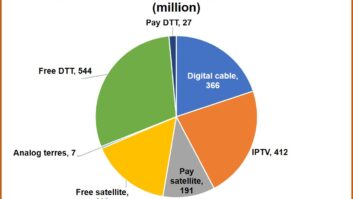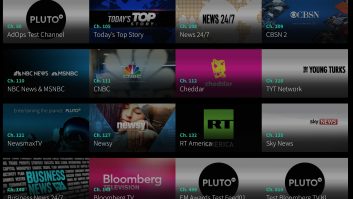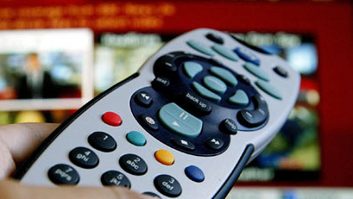According to the European Broadcasting Union (EBU), the future of digital TV could be adversely affected by decisions taken at the ITU World Radiocommunication Conference (WRC-07) in Geneva October 22 – November 16. One of the items on the Conference’s agenda concerns the identification of frequency bands for international mobile telecommunications (IMT) services, such as third generation UMTS mobile phones, writes Andy Stout.
The bands under consideration include UHF Bands IV & V (470 – 862 MHz) in ITU Region 1, i.e. Europe, Africa and parts of the Middle East, which are currently used for TV broadcasting. “In many European countries, digital terrestrial TV in these bands has already become a major success based on the availability of free-to-air TV services,” said Lieven Vermaele, EBU Technical Director. “However, this success story could be jeopardised by the introduction of mobile phone services in broadcasting frequency bands.”
Interference problems can easily arise when a number of services are deployed in the same frequency bands. Interference to analogue TV services typically appears as obtrusive patterns on the picture, while interference to digital TV services has much more radical effects, resulting in a complete blank screen. This would be unacceptable to consumers.
A recent study of the European Conference of Postal and Telecommunications Administrations (CEPT), which represents 48 EU countries, highlighted the problem of potential interference between mobile phones and TV services. CEPT suggests that further technical studies are necessary in this area and therefore allocations to the mobile service in relevant parts of the band 470 – 862 MHz should be considered only at the next World Radiocommunication Conference in 2011.
In view of the many uncertainties about interference issues, the EBU strongly endorses CEPT’s position. “We urge ITU to wait and study the options before making any decision on band sharing,” said Vermaele. “In 2011 the picture will be much clearer.”
The transition to digital TV will free up some spectrum now used for analogue transmission but the amount of spectrum released will depend on national circumstances, such as the topography of a country, the penetration of satellite and/or cable services, the requirements for regional services and the spectrum usage in adjacent countries. The size and shape of the digital dividend, i.e. spectrum that can be released when analogue TV services shut down, is therefore still unknown. In most countries it will become a tangible national asset when analogue switch-off will be completed.
Therefore, at this early stage in the evolution of UMTS and similar mobile techniques, it is not yet possible to assess the spectrum requirements or the technical possibilities for such services to use UHF Bands IV & V. According to the EBU, it is entirely appropriate that decisions about the use of these bands by mobile radio services be deferred to the next World Radiocommunication Conference (WRC-11).
Broadcasters currently require access to the whole of UHF Bands IV & V to achieve the crucial transition from analogue TV to digital TV, whilst also permitting the gradual deployment of mobile TV and HDTV.







